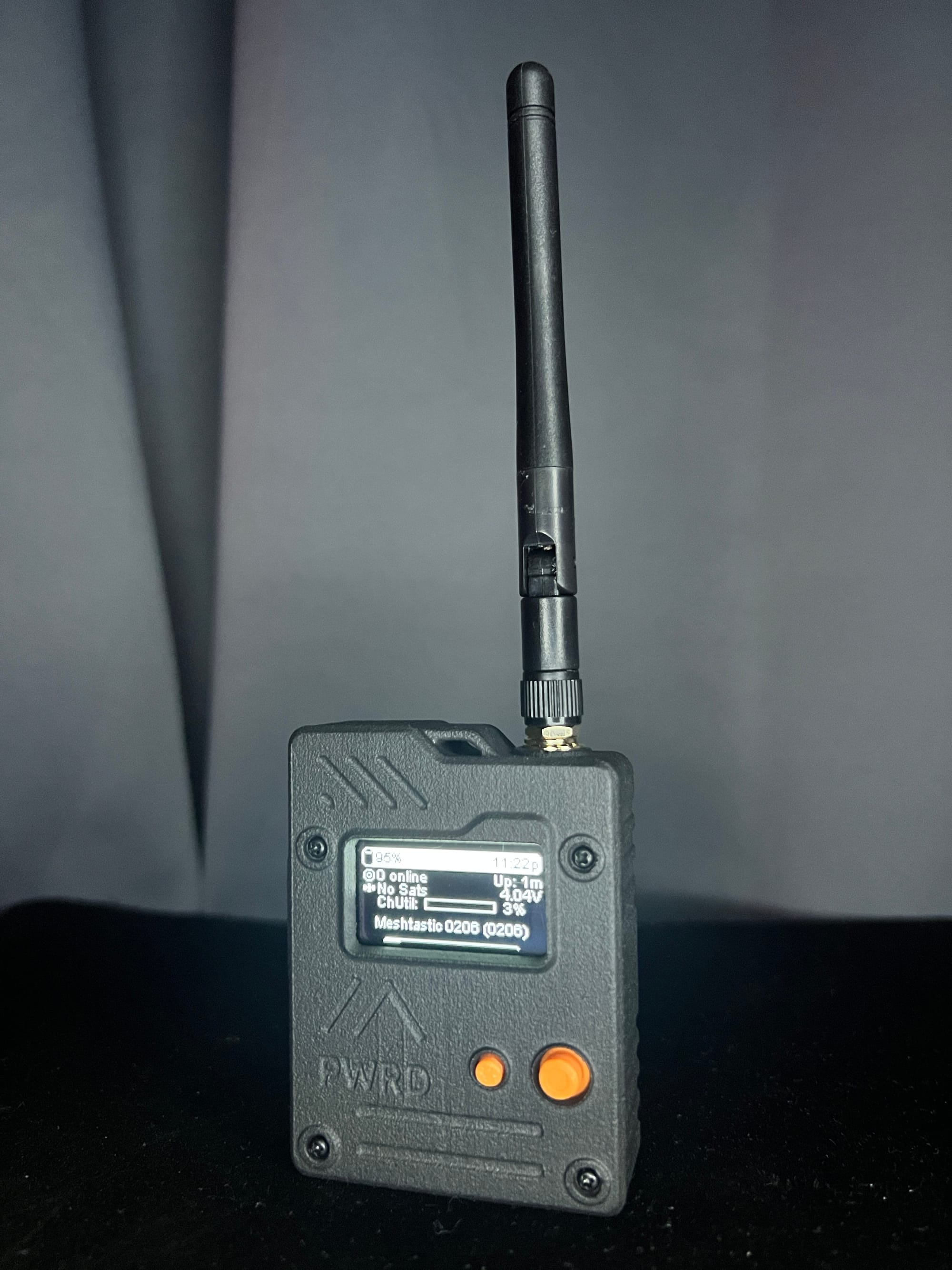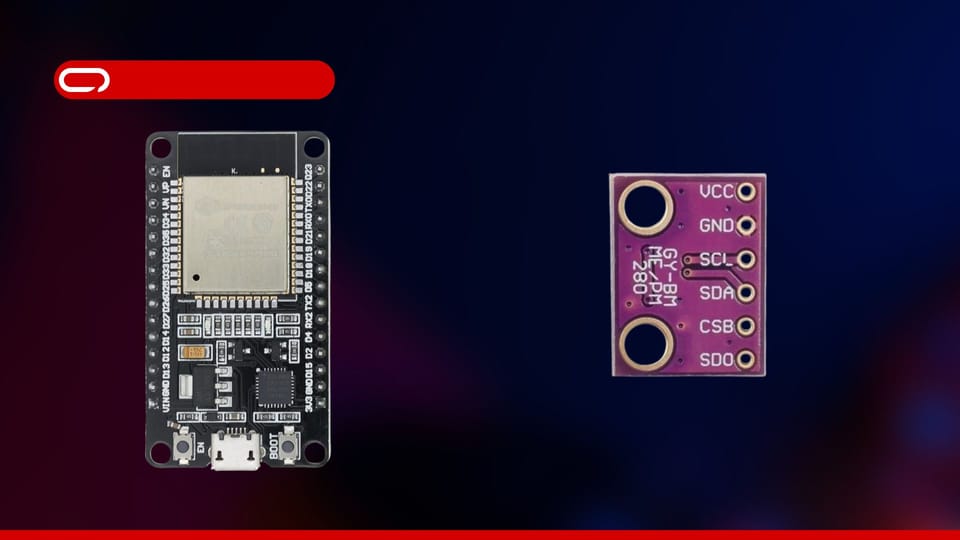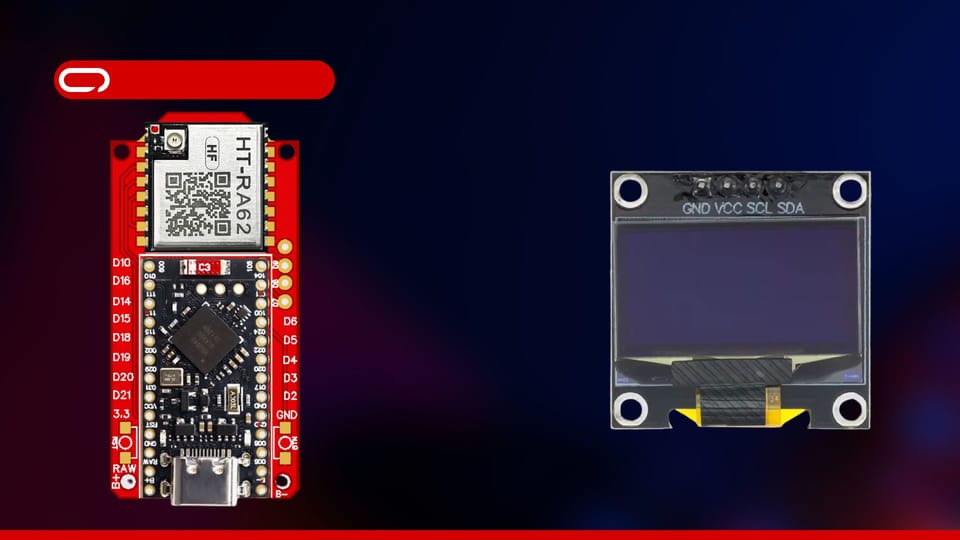ThinkNode M1 Review: E-Paper Display Handheld with Premium Build Quality
The ThinkNode M1 is a polished, ready-to-use Meshtastic handheld with e-paper display, injection-molded housing, and 4–5 day battery life. With a machined knob, GPS switch, and RTC clock, it’s compact, reliable, and outdoors-ready.
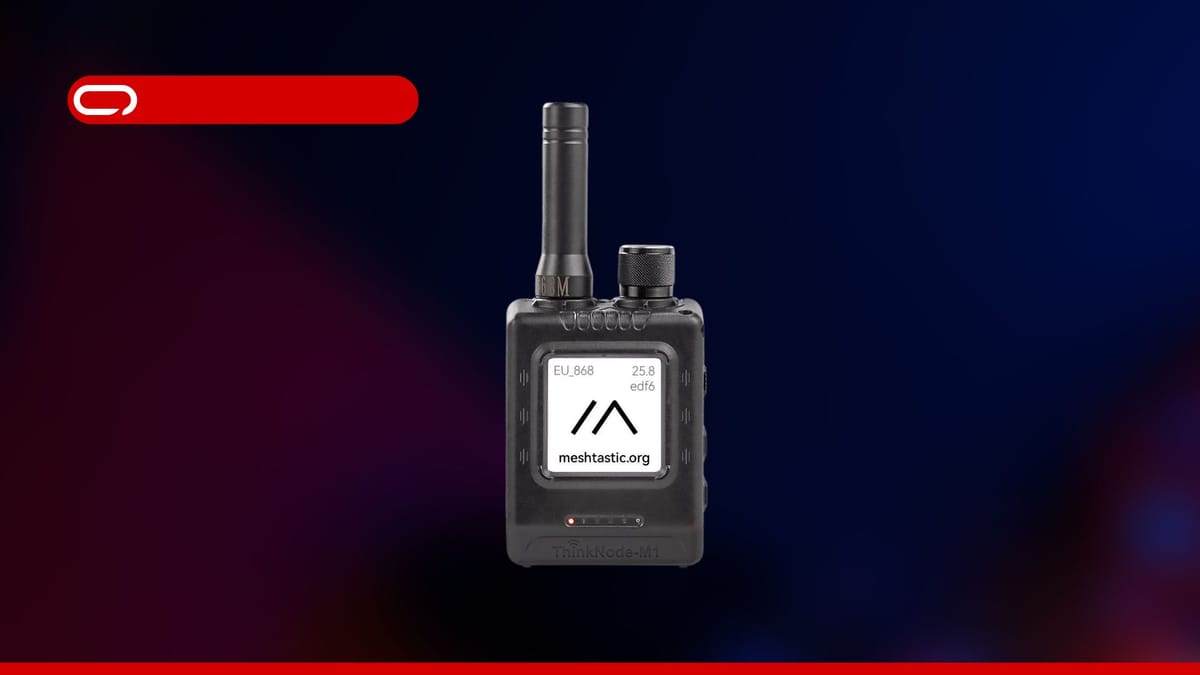
The ThinkNode M1 brings a 1.54" e-paper display, injection-molded housing, and impressive 4-5 day battery life to the Meshtastic handheld market for $40.50 (bare) or $53.90 (with case). With a machined control knob and dedicated GPS switch, it's one of the most polished consumer-ready devices we've tested but does the new InkUI live up to the hardware quality?
Unboxing and First Impressions
The ThinkNode M1 arrives in polished packaging that immediately signals a more consumer-focused approach than typical DIY Meshtastic hardware. Inside the box, you'll find:
- 1x ThinkNode M1 Device
- 1x USB-A to Type-C Cable
- 1x LoRa Antenna
- 1x User Manual
The build quality is genuinely impressive and represents a significant step up from the 3D-printed enclosures common in this space. Unlike most ready-to-use handhelds, the ThinkNode M1 features an injection-molded ABS plastic housing putting it in the same league as premium devices like RAKwireless's card-styled node and the T1000-E, rather than the typical 3D-printed crowd.
The machined control knob deserves special mention. It turns smoothly with satisfying tactile feedback, feeling more like a consumer electronics product than a DIY radio. The physical controls are thoughtfully laid out:
- Machined knob (top) - smooth rotation with good resistance
- GPS switch - dedicated hardware toggle (huge plus no software diving required)
- Function button - for selections and screen control
- Page turn button - menu navigation
- Reset button - not very easily accessible
- Lanyard holes - practical for outdoor carry
The e-paper display sits behind a recessed mounted window, giving the device a clean, unified appearance. Overall, this feels like a finished product designed for actual consumers, not just enthusiasts willing to tinker.
Make sure to verify connector type before attaching an antenna or buying a new one — RP-SMA and SMA are not compatible and forcing the wrong type can damage the connector.
Features Overview
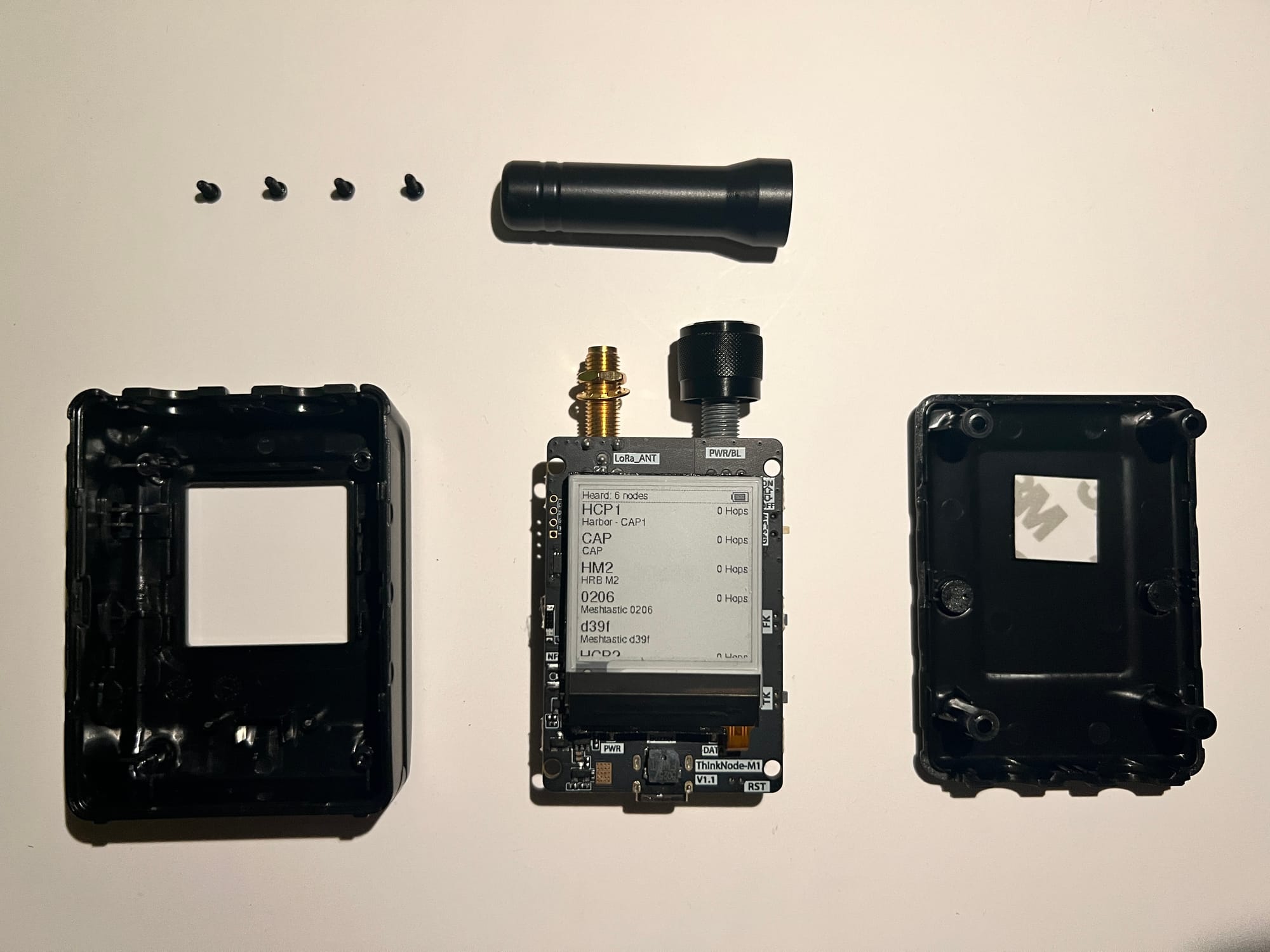

The ThinkNode M1 is about the size of a matchbox 82 by 51 millimeters yet inside, it’s packed with solid hardware.
It runs on the Nordic nRF52840, the same reliable power efficient chip used in most handheld Meshtastic devices. For long-range communication, it uses the new SX1262 radio, which can push up to +22dBm of transmit power. It supports both 915MHz and 868MHz bands, so you can use it pretty much anywhere. Configuration is simple, just connect over Bluetooth using the Meshtastic app on your phone.
On the front, there’s a 1.54” e-paper display, the same kind of screen used in e-readers. It’s not fast about two seconds per refresh but it’s easy on the eyes and stays readable even under sunlight, which makes it perfect for outdoor use. The screen is also backlit, making it convenient to use in the dark. You get the best of both worlds the backlit light of an OLED display and the power efficiency of e-paper.
The M1 also includes GPS with multi-constellation support (GPS, GLONASS, BeiDou, QZSS). It locks quickly and stays accurate. There’s a small but smart touch here: the RTC clock. It keeps time even when the device is off, so your timestamps stay correct and GPS starts faster after reboot something most devices skip but turns out to be really useful in practice.
It’s got the small things covered too, a buzzer for alerts, LEDs for LoRa and GPS status, and a 1200mAh battery that charges over USB-C. The whole thing weighs just 81 grams with the case and feels sturdy thanks to the ABS plastic shell.
Out of the box, it’s already running Meshtastic firmware, so you can pair it, join a mesh, and start sending messages or sharing location right away.
Flashing the Firmware
The ThinkNode M1 comes preflashed with Meshtastic firmware, but if you want to update to the latest version (especially to take advantage of the new InkUI optimized for e-paper displays), here's the process:
Erase the Existing Firmware:
- Navigate to the Meshtastic Web Flasher
- Select "ThinkNode M1" from the device options
- Click on the trash symbol next to the flash button to erase the existing firmware
Entering DFU Mode:
You'll need to enter DFU mode (Device Firmware Update mode) to proceed:
Option 1: Double-press the reset button on the device. A USB drive should appear on your computer.
Option 2: Click "Enter DFU Mode" in the Web Flasher (after clicking Flash and Continue), select the correct COM Port, then click Connect.
Erase the Flash in DFU Mode:
- Once in DFU mode, the ThinkNode M1 will appear as a drive on your computer
- Download the Flash Erase UF2 file and copy it to the DFU drive
- After transferring, the drive will disappear and the device will reboot
- Return to the Web Flasher and click "Open Serial Monitor", select the correct COM Port, then click Connect
- Wait a few seconds—it should display "done" once formatting is complete
Flashing the New Firmware:
- After erasing, return to the Web Flasher and choose the latest firmware version (2.7.x recommended for InkUI support)
- Select Flash, and you'll need to enter DFU mode again (repeat the previous step)
- Once in DFU mode, download or copy the UF2 file for the new firmware onto the DFU drive
- The device will automatically reboot once the transfer is complete
Performance
Battery Life
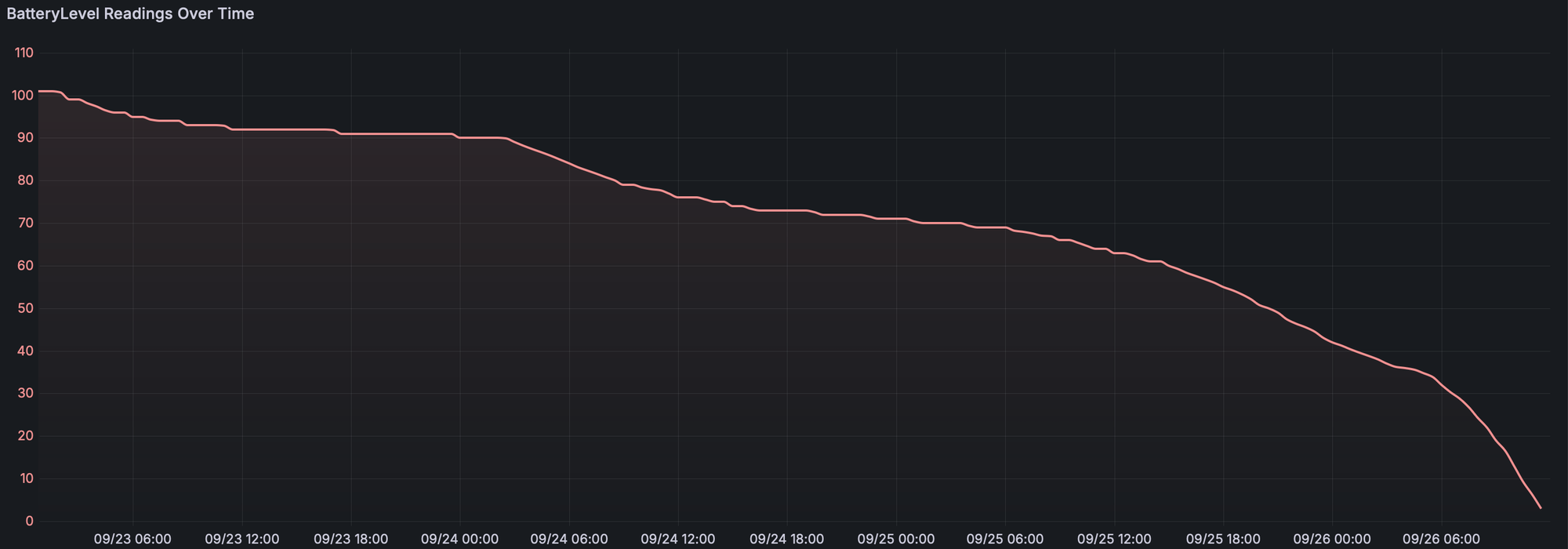
The ThinkNode M1's battery performance exceeded expectations. With a relatively modest 1200mAh battery. However, real-world testing revealed impressive results:
Battery-only operation (GPS disabled): The device lasted 4-5 days with typical usage patterns including periodic screen updates and message transmission. This is excellent performance for an e-paper handheld of this size. Almost of the long lasting devices in real world testing compared to the form factor!
Expected performance (GPS enabled): Based on typical GPS power draw, we estimate 2-3 days of runtime with continuous GPS operation still very respectable for a 1200mAh battery.
Compared to similar devices:
- Wio Tracker L1 Pro (2000mAh): ~2.5 days without GPS
- WisMesh Pocket V2 (3200mAh): 3-5 days without GPS
- ThinkNode M1 (1200mAh): 4-5 days without GPS
For a device with a backlit e-paper display and this battery capacity, these results are pretty impressive and also in line with what we'd expect from efficient nRF52840 power management. The combination of the ultra-low-power SSD1681 e-paper driver (~5.6μA in sleep mode) and the nRF52840's power efficiency really shines here when it comes to power efficiency.
GPS Performance
The built-in GPS module performed as expected, delivering reliable positioning with no surprises which is exactly what you want in a handheld device.
Multi-constellation support (GPS, GLONASS, BeiDou, QZSS) ensures faster lock times and better accuracy compared to GPS-only solutions. In our testing:
The dedicated GPS hardware switch is a standout feature. Rather than diving into software menus to toggle GPS on/off, you simply flip a physical switch. This is incredibly convenient for:
- Conserving battery when positioning isn't needed
- Quick GPS enable/disable during active use
- Clear visual confirmation of GPS state
One practical benefit of the RTC integration: the real-time clock maintains accurate time even when powered off, which helps the GPS achieve faster hot starts by maintaining satellite almanac data and reducing time-to-first-fix.
Overall, GPS performance is solid and reliable no issues to report, just dependable positioning when you need it.
Range and Connectivity
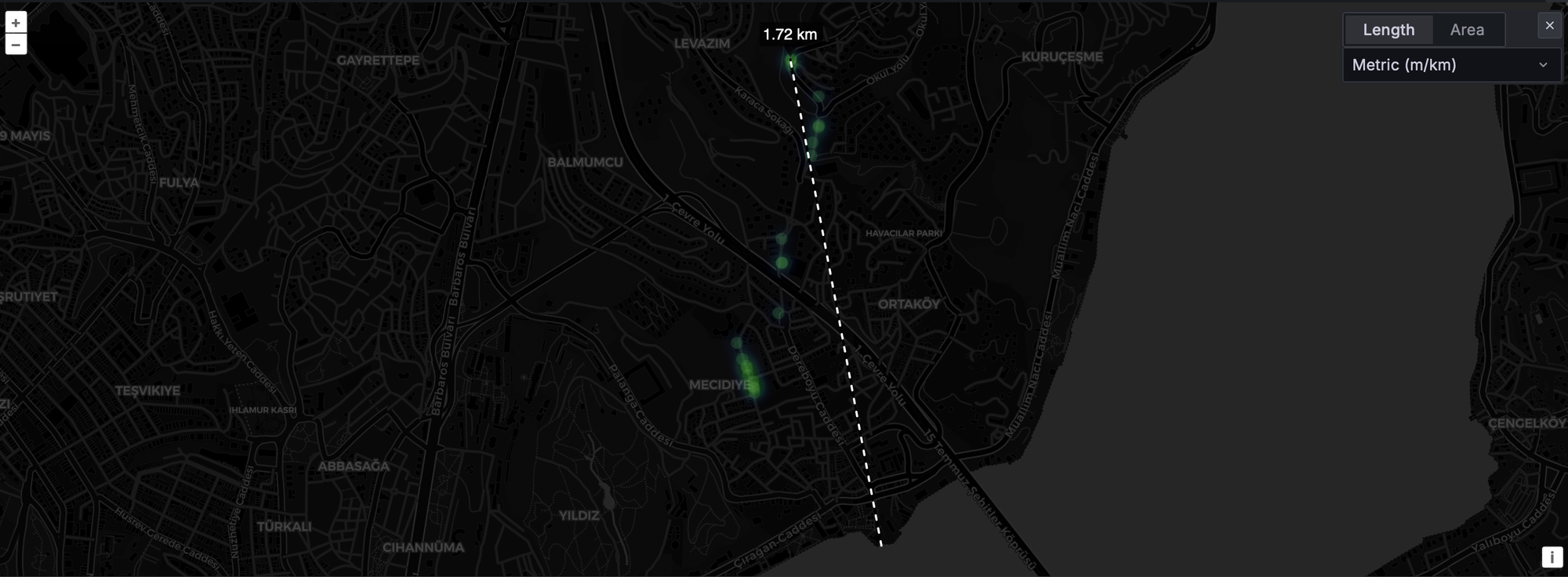
Range testing revealed some interesting results that require context to interpret properly. In our standardized testing environment (urban center, clear weather conditions), the ThinkNode M1 achieved approximately 1.71km of reliable range.
Signal Strength Observations: During testing, we noticed the M1 struggled slightly more with signal strength consistency compared to some other devices. Compared to the ThinkNode M2 (which we'll review soon), we observed:
- Occasional delays in message acknowledgments (ACK)
- Some transmission failures at the edge of range
- Less consistent signal strength at comparable distances
Range Performance Perspective: The ~1.71km result in urban conditions is adequate but not exceptional. For comparison with devices tested in the same environment:
- Wio Tracker L1 Pro: ~1.8km (very close to T1000-E performance)
- T1000-E: ~1.8km+ (one of our top performers)
- WisMesh devices with external antennas: 800m-1km+ (FPC antenna baseline)
The slight struggle with signal consistency is worth noting, particularly if you're deploying this as an edge node where reliable connectivity is critical. However, for typical mesh participant roles or handheld use where you're within a moderate distance of other nodes, the performance should be sufficient.
Make sure to verify connector type before attaching an antenna or buying a new one — RP-SMA and SMA are not compatible and forcing the wrong type can damage the connector.
Display and User Interface
The 1.54" e-paper display is the ThinkNode M1's defining feature, and its user experience varies dramatically depending on which firmware version you're running.
Old UI (Pre-2.7 Firmware)
With the older Meshtastic UI, the e-paper experience was functional but finicky. E-paper displays weren't originally a primary focus for Meshtastic's interface design, and it showed:
- Slower screen updates
- Occasional lagging or unresponsiveness
- Very little you can do other than scrolling through pages
InkUI (Firmware 2.7+)
After flashing to firmware 2.7.x with InkUI, the experience transforms completely. InkUI is specifically designed for e-paper displays, and the difference is immediately obvious:
Screen Behavior:
- Much faster refresh rates - noticeable improvement in responsiveness
- Optimized rendering - better user experience, less laggy
Control Scheme Changes: With InkUI, the button/knob functions are remapped:
- Function button: Toggle screen backlight on/off
- Knob (turn): Adjust screen brightness
- Page button (single press): Cycle through pages/options
- Page button (long press): Access options menu/select
User Experience Trade-offs: InkUI is definitely better optimized for e-paper, but the new control scheme is less intuitive than we'd hoped:
- Getting to specific functions takes more button presses
- The knob's brightness-only role feels like underutilizing good hardware
- Menu navigation requires more deliberate attention
That said, the overall experience is significantly improved from the pre-2.7 firmware. The screen behaves much more like a proper e-paper interface, with faster updates and better rendering. It's a trade-off: slightly less intuitive controls in exchange for much better display performance.
E-Paper Benefits
The e-paper display excels in several key areas:
- Outdoor readability: Excellent visibility in direct sunlight (no backlight glare)
- Power efficiency: Only draws power during refresh, not while displaying static content
- Readability at angles: Unlike LCDs, remains clear from any viewing angle
- Eye comfort: No PWM flicker, easier on eyes during extended use
E-Paper Limitations
- Refresh latency: Even optimized, e-paper can't match OLED response times
- No real-time updates: Status indicators must be manually refreshed
- Ghosting: Occasional residual images if partial refreshes accumulate
The display experience with InkUI is genuinely good much better than the old UI. While the control scheme isn't perfect unlike the joystick from the Wio Tracker L1 Pro, the screen itself behaves properly and makes the device pleasant to use. If you're considering the ThinkNode M1, we strongly recommend flashing to firmware 2.7+ immediately to get the InkUI experience.
Expandability and Customization
The ThinkNode M1 is designed as a ready-to-go handheld, and that philosophy extends to its approach to expansion: there essentially isn't any.
No External Expansion
Unlike modular boards (RAK19007, WisMesh Board ONE, etc.), the M1 offers:
- No WisBlock sensor slots
- No Grove connectors
- No accessible I2C/UART headers
This is a deliberate design choice Elecrow positioned this as a consumer-ready device, not a development platform. If you need sensor expansion, environmental monitoring, or custom peripherals, you'll want to look at other models.
Internal Access
Opening up the device reveals SWD (Serial Wire Debug) programming pins on the PCB. However:
- Their exact capabilities and use cases are not clearly documented
- Likely intended for factory programming or advanced debugging
- Not designed for end-user modification
For the average user, these pins won't be relevant. For advanced developers, they might enable custom firmware experimentation but you're on your own without official documentation.
Pricing
The ThinkNode M1 lands at $40.50 for the bare board or $53.90 with the case, which positions it very interestingly in the Meshtastic market. It’s one of the only ready-to-use handhelds with a proper case you can actually buy right now, alongside the T-Echo at around $62. Compared to the T-Echo, the M1 undercuts the price while offering a bigger battery, better controls, a dedicated GPS switch, and a smaller, more pocketable form factor.
The closest alternative is the Wio LP Pro. Yes, the M1 is almost $10 more expensive, but you get much longer battery life thanks to the e-ink display while keeping an almost identical or even smaller form factor. The M1 also includes an RTC clock, a dedicated GPS button, and a premium injection-molded feel, whereas the LP Pro is bare-board or 3D printed case. The trade-off is losing solar capability, but for many users, the extra battery longevity and finished product quality are worth the price for something meant to be used as handheld.
Seeed Studio’s Wio LP Pro with e-ink is still bare-board only, and even when the case arrives it’ll cost more than the OLED version, so the M1’s ready-to-use e-paper package is appealing. The Wio Tracker L1 Pro at $42.90 packs impressive features like solar charging, a joystick, expansion slots that is impossible to use with handheld due to size, GPS, and a 2000mAh battery, but it’s 3D-printed and doesn’t feel as premium. The M1’s injection-molded case, e-paper display, and 4–5 day battery life make it feel like a true finished handheld.
On the higher end, the WisMesh Pocket V2 at $99 and Board ONE Pocket at $66 are either 3D-printed or limited in battery life and range, while the T1000-E at $39.90 has great range and IP65 water resistance but no screen or full controls. DIY options like XIAO ESP32S3 kits are cheaper but require assembly, expansion boards, and compromise on battery and range.
At $53.90, the M1 isn’t the cheapest option but the cost reflects e-paper, injection-molded manufacturing, integrated battery, GPS, buzzer, RTC, and a quality machined knob, all assembled and ready to go. It’s a mid-tier device that fills a gap in the market: a polished, outdoors-friendly, standalone handheld that beats cheaper 3D-printed or bare-board alternatives in usability and battery life.
Final Thoughts
The ThinkNode M1 is a standout in the Meshtastic handheld market, offering a rare combination of polished build quality, long battery life, and outdoor-friendly and power efficient e-Ink display. It’s not the cheapest option, but it delivers a complete, ready-to-use experience that most DIY or 3D-printed alternatives simply can’t match. The injection-molded housing, machined control knob, dedicated GPS switch, and thoughtful touches like the RTC clock all make it feel like a true consumer device rather than a hobbyist project.
While it lacks expansion options and trades off solar charging found on some competitors, the M1 excels at what it’s designed for: a standalone, reliable, and portable handheld for outdoor use. The InkUI firmware dramatically improves the e-paper experience, making navigation and messaging smoother, even if the control scheme takes some getting used to.
If you prioritize multi-day battery life, rugged usability, and a premium feel in a compact package, the ThinkNode M1 hits a sweet spot. For those who want maximum features per dollar, solar charging, or sensor expansion, other devices may be more suitable but for an everyday handheld that “just works” out of the box, the M1 is hard to beat.


